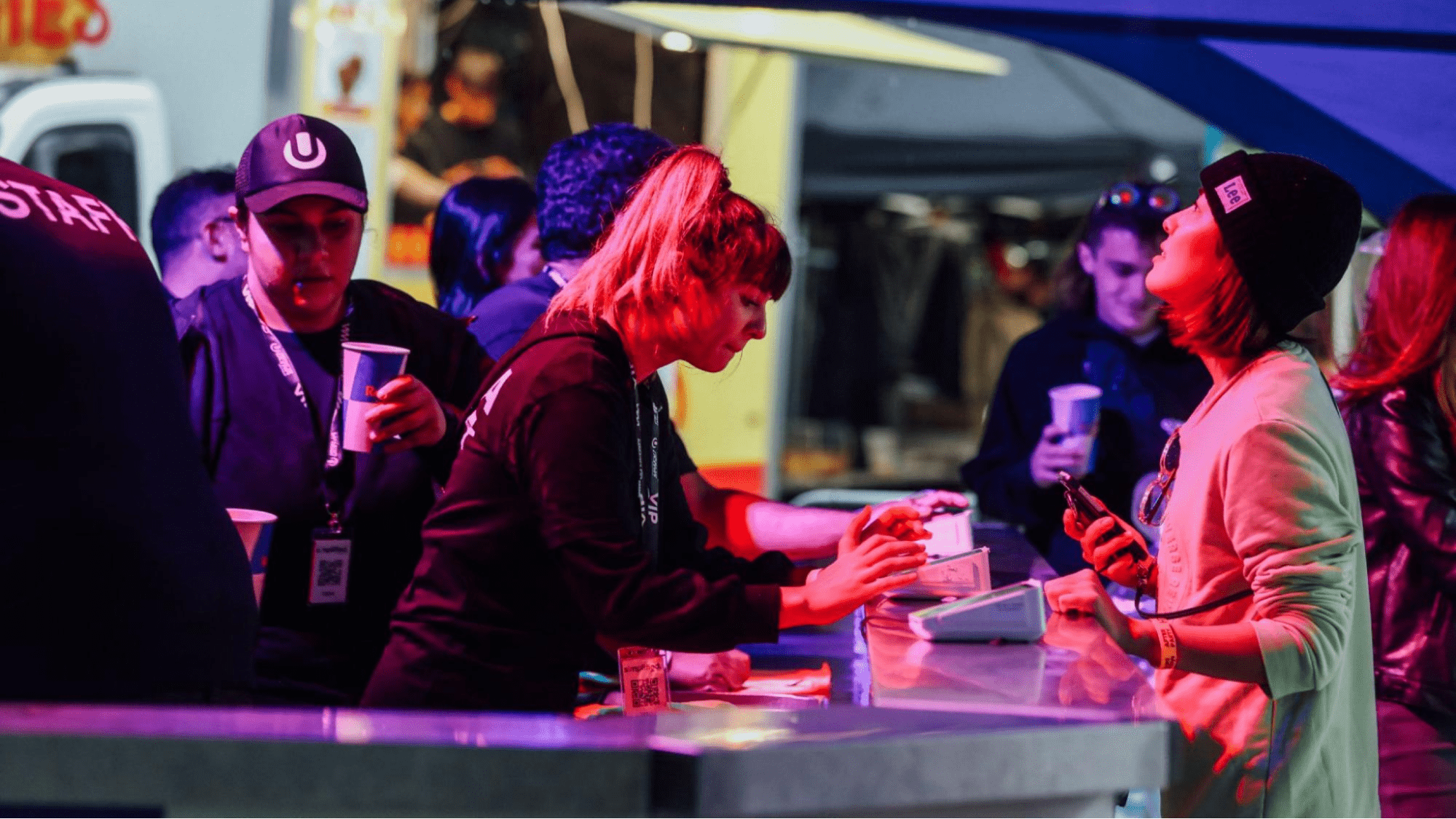Underestimating the role an effective event agenda plays in successful events is a crime.
So if you’re guilty, please stay where you are and place your hands above your head…
Okay, fine. We’ll go easy on you this time — but only because we kind of understand where your confusion comes from.
You probably think event agendas are boring pieces of paper with action items and time slots written in Times New Roman.
But, we’re telling you, we’ve seen a world where innovative event agendas are used throughout the entire event planning process and as creative marketing assets.
At Eventbrite, we’re crazy about event planning, from writing event agendas to creating event timelines — we love it all.
In this article, we’ll show you how to write an event agenda, highlight the best event agenda examples, and provide you with a free event agenda template for your attendees, and one for your team.
Let’s start with the benefits of a well-executed event agenda.

Why do you need an event agenda? (+4 event agenda examples)
The perfect event agenda provides clear instructions on your event’s schedule so that attendees know exactly what to expect and where they need to head at what times.
Think of your agenda for an event as a miniature rundown for the four event W’s: ‘Who,’ ‘What,’ ‘When,’ and ‘Where.’
It should include:
- A detailed breakdown of each session or event activity, including the speaker/presenter/artist, start and end times, and location.
- A short description of each activity, such as its objectives and what topics will be covered.
- Key information on special features, like interactive workshops, Q+A sessions or key performers.
However, that’s not all event agendas are good for — they also showcase your unique event goals and value to attendees.
According to the Expectancy Disconfirmation Paradigm (EDP), attendees have expectations about the quality of your event before they even set foot through the door — and their enjoyment level depends on your ability to meet these preconceived ideas.
Event agendas play a role in this process by giving attendees a taste of what’s to come.
You can incorporate a killer event agenda in your registration strategy by:
- Adding your event agenda into your event description so attendees know exactly what they’re in for.
- Sending out a ‘final event agenda’ after event registration in your invitation email to help paying attendees so they can start getting excited and organized for your event.
Are you starting to see the power of event agendas?
Now, we know what you’re about to say: “Aren’t event agendas the same as meeting agendas?” The answer is no.
While meeting agendas are only used to organize one type of experience, like work meetings or corporate functions, event agendas are event schedules you can use for different events.
Corporate events
Event agendas are often used in corporate events, such as conferences, virtual meetings, or seminars, because they’re a practical way to keep attendees in the loop and a great corporate event planning tool.
Typically, corporate event agendas include information on the event location and the start time and duration of each activity/performance.
However, they can also provide attendees with a preview of the topics an activity will cover and the value of participating. For instance, an event agenda may reveal information on keynote speakers and interactive Q&A sessions.

One of the best event agenda examples we can think of is Pion’s Youth Marketing event schedule above. Pion intentionally uses phrases like ‘spoiler alert’ to pique potential attendees’ curiosity and convince them to buy a ticket.
💡Pro tip: If you’re squeezing a full conference into one business day, you’ll want to get an early start. Consider breakfast at 8am so guests have time to eat and settle, and start official conference activities by 9am.
Music festivals and live music events
Event agendas are also an effective communication tool for music festivals and live music events.
They simplify coordinating performances and inform attendees about showtimes, stage locations, and the duration of a show. Event agendas also allow attendees to schedule their day in advance.

For example, the Big Dub Festival event agenda helps attendees navigate their event’s different stages and performers.
💡Pro tip: Allow enough time between performances if an artist has an extravagant set requiring dismantling for the next performer or if a musician needs time to set up their instruments.

Multi-day events
Event agendas are also invaluable tools for navigating events that last multiple days, such as conferences, wellness retreats, or immersive experiences.
Multi-day event agendas typically include specific details about the entire event, such as where performers or acts will be located and information on scheduled breaks.
💡Pro tip: Some event organizers, such as Coachella, use a customizable app as an event agenda for their music festival so they can provide attendees with real-time updates on any changes made throughout the day.

Event team agendas
As you know, event planning is a daunting task. Ensuring everyone on your team has a clear idea of what to do is the only way to make your event successful.
Whether you’re hosting an in-person or virtual event, event agendas for internal use can help you define each team member’s job roles and responsibilities.
They indicate which station team members should guard throughout the event and ensure everyone knows the whereabouts of their teammates in case of an event emergency.
For instance, an event organizer, like ICLUBNYC could use an event team agenda as an event management tool to schedule shifts and appoint adequate break times.
Here’s an example of what your team event agenda might look like:
Timeline
| Time | Goal | Jobs |
| 9–10am | Arrival and set up | ⬜ Coordinate with vendors for food and drink delivery ⬜ Set up food and drink stations according to the layout plan ⬜ Ensure all necessary equipment is in place and operational (and safe)! |
| 10–11:30am | Conduct final checks | ⬜ Assess food and drink inventory ⬜ Coordinate the restocking process ⬜ Clearly label any food items with allergens |
| 11:30–11:45am | Vendor check-in meeting | ⬜ Confirm the arrival of all food vendors ⬜ Open the floor for questions (and address any concerns) ⬜ Run vendors through their individual responsibilities and any safety regulations they need to be aware of |
| 11:45am–4pm | Continuous monitoring during the event | ⬜ Supervise food and drink stations to ensure they appear clean and that lines aren’t overcrowded ⬜ Ensure we stay in compliance with food, safety, and hygiene regulations throughout the event ⬜ Water stations are topped up and clearly visible in the bar area |
| 4–5pm | ‘Final hour’ sale markdowns | ⬜ Coordinate with vendors to offer discounts on remaining food items ⬜ Display signage and make a social media announcement |
| 5–5:15pm | Post-event team meeting | ⬜ Meet up with the whole crew to review the event and see about any further instructions ⬜ Let vendors know we will email them about payment (within the next two days) |
| 5:15–9pm | Event clean up | ⬜ Make sure vendors have cleaned up their sections in accordance with the contractual agreement ⬜ Ensure trash and recyclables are separated |
💡Pro tip: Download a copy of our editable sample event agenda for teams. It’ll help you get organized on the day, and you can adjust it to your specific needs.
How to make an agenda for events that stands out
We’ll be blunt: Your event agenda should not be bland.
Your event agenda should be filled with that unique personality and charm your attendees know and love, taking into account the template’s design and your vocabulary.
Luckily, you’re spoiled for choice when it comes to creating a killer event agenda, and we have some advice for you.
1. Break down your event’s structure
The first step in creating an agenda for an event is to lay everything out on the table and see what you’re dealing with.
From time for breaks to performer set-up times, anything requiring your time, your team’s, or your attendee’s needs consideration.
The next step is to arrange these points into an event timeline.
You can do this by:
- Assigning each activity an estimated time slot
- Organizing the activities in chronological order
💡Pro tip: Write your activity on small pieces of paper and organize your timeline on a table. This will allow you to move ‘event jigsaw pieces’ around to determine the right sequence of events.
2. Create a minute-by-minute timesheet
Now that you have a rough event timeline, you can move on to a minute-by-minute plan.
This process will help you identify possible time clashes in your sample event agendas and ensure you use your time effectively to create an engaging experience.
For instance, if you’re hosting a seminar from 9am–1pm, you have four hours of attendees’ paid time to account for.
We recommend downloading a free Excel timesheet template and using it as a temporary event agenda template. From here, it’s simply a case of slotting in each activity from your proposed event timeline and using time-blocking to see how everything will fit together.
To make life easier:
- Use color-coding to distinguish between ‘attendee time’ and ‘event team time’
- Include 15-minute time ‘buffers’ for prep work and pack-up
💡Pro tip: If the thought of using an Excel timesheet makes your brain hurt, use time management software like TickTick. The great thing about these tools is that you can invite your event team to work collaboratively on your sample event agendas.

3. Highlight the unique value proposition of each activity
Once you’ve finished your event’s schedule, transfer all the information into a professional event agenda template, such as the one we’ve provided.
Go through your event agenda template and add short descriptions to your event’s activities.
These descriptions should include essential information, such as where the activity will be hosted and parking guidance.
We recommend you also add a short ‘teaser’ or ‘blurb’ describing each activity’s value. To get attendees excited:
- Add a clear objective, such as what they’ll gain or experience from the activity
- End each description with a cliffhanger that leaves attendees desperate to discover more, such as ‘You’ll learn the secret to social media marketing that no one wants you to know’
💡Pro tip: Take a look at how Murray Center for Women in Technology uses event agendas to show potential attendees that their events are so crammed with incredible speakers, they’d be unwise not to snap up a ticket.

4. Make it look beautiful
While using an event agenda template is a great place to learn how to make an agenda containing all the right information, to attract attendees, you’ll want to make it really pop — and the only way to do that is to make it your own.
So, we suggest copying and pasting the final version of your event agenda into Canva or a similar tool, and unleashing your inner graphic designer.
Don’t be afraid to be bold. Include visuals, put key details in colorful writing, and use arrows to emphasize important information.
Think of your sample event agendas as canvases for creativity — nothing is off-limits. Just ensure that your event agenda still:
- Uses a font that’s legible
- Doesn’t look crammed with information
💡Pro tip: Make your event agenda stand out by including live photos from your past events!

Expert tips for event agenda time scheduling
A recent study found that 55.7% of event managers and organizers don’t use the same method for managing their events.
While there’s nothing wrong with changing your approach, not following an organized event schedule can lead to serious stress and time management issues.
Here are some tips and tricks to help you become a time-scheduling wizard.
Build-in breaks every 90 minutes
Incorporating formal breaks every 90 minutes will help keep guests attentive and refreshed.
Having a dedicated break space where snacks and drinks are available and where attendees can catch up on emails and calls will ensure guests don’t get unnecessarily overwhelmed by all of the day’s sessions. This will also allow them to network and connect with other attendees.
Format 30-minute segments
Change up your formats, speakers, or performers every 30 to 50 minutes to keep guests engaged and from getting bored or restless (any less and it feels rushed).
Establish a mix of sit-down talks and interactive engagement sessions, especially after lunch when attendees can feel sluggish.
Make sure attendees have enough time to get from one place to another
While speakers and performers help sell your event, trying to fit too many sessions into the day can be overwhelming.
Sometimes, less is more.
Mix in panel events and lightning talks for attendees who would rather be more low-key. The main headliner isn’t necessarily the draw for everyone, and specialized workshops or talks could stand to capture a niche crowd that wouldn’t normally sign up.
Finish with a happy hour
After your event or conference, you’ll want to give guests an opportunity to unwind and network.
An after-hours shindig is a perfect way to entice guests to hang around for a while and engage with one another. An open bar with hors d’oeuvres is a nice ‘thank you’ to guests for attending your event and spending time with your program.

Use your killer agenda to market your event
Did we mention that with the right distribution strategy, event agendas can also be a clever event promotion idea?
Tease your community about your event agenda’s ‘drop date’ with an Instagram countdown. Or, ‘leak’ one item from your event agenda on TikTok each day to cultivate hype around the release of your full event agenda.
For instance, micro-influencers like Olivia Mancuso are ‘reacting’ to the lineup on the Arc Music Festival’s Instagram page. Olivia’s excitement about the event’s agenda is increasing awareness about the event and generating strong interest among her 138k followers.
You can then partner with Eventbrite to create unique tracking links and determine where your ticket registrations are coming from.
Promote your event agenda today

Create an event agenda that grabs attention
No matter what event you create, you want it to be fun and interesting for attendees, right?
Well, the best way to ‘bring the fun’ is to ‘bring the organization’ so everyone can plan their day around what appeals to them the most.
Remember that your event agenda is more than just a sheet of paper. It’s a way to capture attention so your guests have something to talk about before the event even begins.
Do you know what else grabs attendees’ attention? A great registration page, a seamless check-out process, and outstanding marketing.
That’s where Eventbrite comes in. It’s like having an executive assistant who is remarkably good at keeping you informed and always organized in your back pocket at all times.






